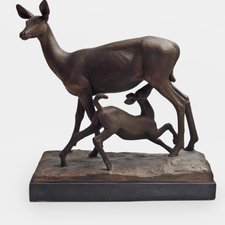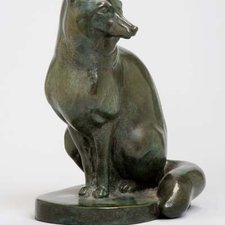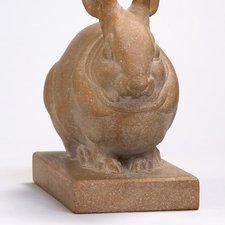Katharine Lane Weems
1899 - 1989
Katharine Lane Weems (1899–1989), along with Anna Vaughn Hyatt Huntington, was among the first generation of women sculptors in America and one of the most successful. In 1985 nearing the end of her long and acclaimed career, Weems’ memoir, Odds Were Against Me, was published. In it she provided insights into the challenges that she and other women or her generation faced as they struggled to gain a foothold in the arts. Sculptor Walker Hancock wrote the foreword to the book, referring to the accomplishments of Katharine Lane Weems, a long-time friend, as a triumph.
Weems was born into a wealthy Boston family who maintained a summer house in Manchester, MA; the property included the house (nicknamed The Chimneys) and an adjacent studio that would eventually become Katharine’s. Between 1918 and 1919 she studied sculpture under Charles Grafly at the School of the Museum of Fine Arts in Boston. Grafly was the preeminent portrait sculptor of the time; in addition to Weems he also provided instruction to Walker Hancock, George Demetrios, Paul Manship and Amelia Peabody among others. In 1918 while she was attending the Museum School, Weems met Huntington and “succumbed instantly to the charm and warmth of her personality.” Weems studied with Huntington in Boston and Annisquam, and later in New York City where sculptor Brenda Putnam provided lessons in anatomy. Later still, Weems would study with George Demetrios. In an oil portrait by Charles Hopkinson, Weems is shown as a young woman filled with poise and confidence.
It was through her work with Anna Vaughn Hyatt Huntington that Katharine Lane Weems perfected the art of portraying animals in clay, a passion for which “Kay,” as she was known to friends, was widely recognized. One of Weems’ earliest successes was her 1927 bronze Narcisse Noir, a work now at the Museum of Fine Arts, Boston, which won her the prestigious Widener Gold Medal from the Pennsylvania Academy of the Fine Arts. Katharine Lane Weems married late in life and continued with her highly successful artistic career for another 60 years.
In this region Weems is most closely associated with her bronze rhinoceroses at Harvard University’s Biological Labratories, a commission she received in 1930, and her 12-foot long group of Dolphins at the New England Aquarium (1979).


